- Administrator
- Albums and Singles
 After last year's acclaimed Please Stop Loving Me and the Ante Algo Azul subscription series, Szczepanik has almost simultaneously put out his first and second vinyl releases. While the two albums could hardly be more different from each other, both carry the composer's careful attention to detail and creation of beautiful, sparse music.
After last year's acclaimed Please Stop Loving Me and the Ante Algo Azul subscription series, Szczepanik has almost simultaneously put out his first and second vinyl releases. While the two albums could hardly be more different from each other, both carry the composer's careful attention to detail and creation of beautiful, sparse music.
The duality of these albums is striking:from the stark differences in artwork to overall presentations of the albums, they sit at the end of two extremes.From the 10 track We Make Life Sad, which has a distinctly nostalgic picture of two children on the front, to the sparse green and yellow design on The Truth of Transience, which almost resembles a vintage geometry textbook, and features two side-long pieces.
The albums follow similar patterns on the actual sonic content as well, with We Make Life Sad focusing on shorter, hazy, static-drenched pensive pieces, while The Truth of Transience is clean, almost sterile, but not off-putting.Much of the former is enshrouded in a warm, nostalgic static that perfectly channel old, but treasured memories.Most of the pieces are rather quiet, with "Consciousness" and "Long Gone" leaning more into the louder end of the spectrum with what could be old 78s from someone’s attic played loudly."Her Last Breath" also goes a bit more into dissonance, but with a rich, slow repetition that never feels too noisy.
"Another Screened World" feels most in line with Szczepanik’s previous work, with shimmering slow passages echoing and reverberating with a nostalgic melancholy."Over Your Dead Body," besides its uncharacteristically morbid title, is another piece of sustained droning tones, and with the organ-like sounds, has a darker, almost funeral quality to it.
Both "Totemic Vignette" and "Nostalgia" use individual notes more than long, drawn out tones, and what at least sounds like a guitar in the former and piano in the latter.In addition to the more complicated structures, they also are bathed in a gloriously captivating static texture, with the latter especially emphasizing the noisier moments towards its conclusion.
samples:
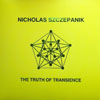
In contrast, The Truth of Transience is a more detached, almost clinical affair.The A side's slow, bellowing opening of cold, sparse tones make this immediately obvious.Nowhere does that reflection on past memories vibe come through here.The droning tones rise and fall, eventually becoming bassier and finally put through a rhythmic tremolo until coming to an abrupt end.
Flipped over, the second part goes for the low-end undercurrent right away, slowly introducing a fuzzed out layer of noise above the rhythmic pulse.Although it is pretty sparse in its construction, there is a clear lushness to the sound that has a multitude of subtleties within.Later on the higher end buzzing elements get slightly more spiny and acidic, ending the piece, once again abruptly, on a dissonant note.
The duality of fuzzy nostalgia and clinical drone are both things that Szczepanik has used in previous works, but here they arepushed to the extremes.Because of this, neither album is better than the other, since they’re both so different, but great in their own ways.Not too many artists can work in these polarizing conditions and succeed in both, but Szczepanik has done just that.
samples:
- The Truth of Transience (Side A, Excerpt 1)
- The Truth of Transience (Side A, Excerpt 2)
- The Truth of Transience (Side B)
 
Read More
- Administrator
- Albums and Singles
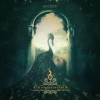 Souvenirs d'un Autre Monde introduced Alcest to the world five years ago with Stéphane "Neige" Paut's ideas fully formed from the start. Écailles de Lune took a conceptually dark detour, with Neige playing around with bold song structures (the album opens with a two-song suite lasting 20 minutes, both parts also titled "Écailles de Lune") and branching into new sounds (see all-acoustic closer "Sur l'Ocean Couleur de Fer"). Third album Les Voyages de l'Âme—translating to The Journeys of the Soul—boasts cleaner production, more immediate hooks, shorter songs, and spiritually evocative titles ("Beings of Light," "Summer's Glory"). In short, this is Alcest's most approachable, immediately striking album.
Souvenirs d'un Autre Monde introduced Alcest to the world five years ago with Stéphane "Neige" Paut's ideas fully formed from the start. Écailles de Lune took a conceptually dark detour, with Neige playing around with bold song structures (the album opens with a two-song suite lasting 20 minutes, both parts also titled "Écailles de Lune") and branching into new sounds (see all-acoustic closer "Sur l'Ocean Couleur de Fer"). Third album Les Voyages de l'Âme—translating to The Journeys of the Soul—boasts cleaner production, more immediate hooks, shorter songs, and spiritually evocative titles ("Beings of Light," "Summer's Glory"). In short, this is Alcest's most approachable, immediately striking album.
At just under six minutes, boasting a killer chorus melody, lead single "Autre Temps" is the most accessible song Alcest has yet released. In a parallel/ideal universe, my gut tells me it would be a monster on modern rock radio. Cleanly picked and strummed guitar builds at the song's start, leading into prominently sung verses (in all French, like the rest of the album) and a sky-high wordless chorus, with Neige harmonizing with himself and crying out to the heavens. The song's secret weapon is the bridge, which hints at Alcest's roots in black metal, its increased tempo adding a sense of urgency before the final chorus pierces through layers of guitars like a blinding ray of sunlight through the clouds. It's an enthralling song, sounding like Jesu playing in blissed-out double time. There's nothing quite as punchy as "Autre Temps" in the remaining 45 minutes of Les Voyages de l'Âme, but for what is essentially a gauzy, atmospheric rock album with hints of extreme metal, it's smart to lead with a tune that makes a strong bid for new listeners.
As the album unfolds, Les Voyages de l'Âme solidifies itself as the next great chapter in Alcest's catalogue—no better or worse than their first two albums, really, but a sharpening of their approach. As usual, the majority of the album leans as much toward shoegaze as it does black metal, far removed from the shrieked vocals, blast beat drumming, and blazing tempos that characterize the latter. Those sounds were hard enough to come by on Alcest's previous two albums; now, with a couple exceptions (like the lung-shredding screams of "Là où Naissent les Couleurs Nouvelles"), they have been almost completely exorcised. And even when Les Voyages de l'Âme delves into minor-key atmospherics, the production is bright and crisp, never lo-fi. Instead of dwelling on despair, hopelessness, torment and suicide, like 95% of black metal acts, Alcest are still out to perfect their brand of uplifting, sun-kissed, melodic rock music, with occasional nods to the scene from which they sprouted. Each time they incorporate urgency and intensity, like on side-two highlight "Faiseurs de Mondes," there is something else to balance it out, like the Creation Records textures of "Summer's Glory" or the triumphant near-balladry of the title track.
Seeing the band play in Austin a few days ago confirmed just how much they've mastered this approach. Doe-eyed frontman Neige, who pens and records all of Alcest's studio instrumentation and vocals, except for drums, was very much a beacon of anti-showmanship, staring out longingly over the crowd while performing, with the occasional "Thanks very much!" sprinkled between. Positioned at center stage, Neige naturally drew the most attention, but this was a group effort: second guitarist Zero was tasked with the vocal harmonies that Neige layers in the studio, while five-string bassist Indria and drummer Winterhalter (who also plays with Les Discrets) provided a hard-hitting rhythm section. When not singing, Neige directed his attention to his guitar, engulfing the crowd in swirling distortion and harmonics; whoever introduced this guy to his first Fender Jaguar should be given a medal.
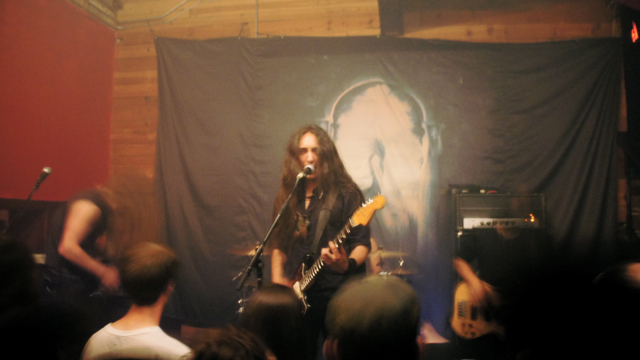
Alcest's live show was as expertly sequenced as their new album, with the band opening with "Autre Temps" (hey, if it isn't broke...) and building from there. Except for the propulsive "Les Iris," from Souvenirs d'un Autre Monde, the initial half-hour was centered around Les Voyages de l'Âme. As the evening progressed, the band pulled out a few choice cuts from their first two albums. The small capacity crowd (maybe 200 people) greeted "Printemps Emeraude," also from Souvenirs, with the most raucous cheers of the night. The front section moshed joyously during "Percées de Lumière," which broke up the predominantly atmospheric mood with Neige screaming into his mic in true black metal fashion. When Alcest called it a night after about an hour—no encore—the crowd filed out, satiated. The concert was marked by Neige's low-key confidence in his songs, not his stage presence. Except for the band playing in front of me, partially obscured by the dim, unchanging lighting and smoke machine, it sounded pretty similar to when I play the albums at home; I'd imagine Neige would take that as a compliment.
Three albums in, Alcest have more or less perfected their style, and with more and more bands blending black metal with other genres, their influence on peers and newer acts seems to be catching up with them. The band they are most often compared to—My Bloody Valentine—cemented their legend and critical reputation by bowing out at the height of their powers. Alcest, on the other hand, seem like they are just warming up, currently in the midst of their first extensive US tour. Whether or not they can evolve their sound without the formula growing stale remains to be seen. For now, Les Voyages de l'Âme, while not the runaway best album of their career, is a fine encapsulation of Alcest's strengths and an achievement in its own right.
Samples:
Read More
- Duncan Edwards
- Albums and Singles
 This is a very welcome reissue of the final album by the Collins sisters. They cast a marvelous spell on mysterious traditional songs from Southern England. It's all here: advice, a beheading, blacksmiths, erections, farming, happiness, a hanging, letters, loss, love, nosebleeds, poaching, pudding, rakes, revenge, treachery, and youth. All that and their cover of "Never Again," a Richard Thompson lament more contemporary to this 1978 recording.
This is a very welcome reissue of the final album by the Collins sisters. They cast a marvelous spell on mysterious traditional songs from Southern England. It's all here: advice, a beheading, blacksmiths, erections, farming, happiness, a hanging, letters, loss, love, nosebleeds, poaching, pudding, rakes, revenge, treachery, and youth. All that and their cover of "Never Again," a Richard Thompson lament more contemporary to this 1978 recording.
Shirley Collins met the US music historian Alan Lomax in London and, in 1959, journeyed with him across the United States collecting blues and roots songs for posterity. She returned to England and set about a similar project in her homeland. Long before all that, Shirley and her sister, Dolly, learned to appreciate music from their grandfather, Fred Ball, who knew many old tunes and played the tin whistle.  From their uncle, also called Fred Ball, Dolly learned how to include just the proper material in arrangements and not bring in unnecessary items. This is how songs were passed from one generation to the next and allowed for both preservation of material but also reinterpretation, mishearing, and other deviations from what might be called traditional.
A good example of this process is "Lord Allenwater," a song collected (or remembered) in 1904 by E.A. Stears of Sussex. Shirley sings, Dolly plays flute organ and piano, with Phil Pickett on cornet and Michael Gregory doing percussion. It is probably based on the facts and legends that have built up around the tale of James Ratcliffe, 3rd Earl of Derwentwater, who was beheaded on Tower Hill in 1716 for his part in the Jacobite uprising of the previous year. As Shirley comments:
"The entire story has been handed down as factual—as if it really happened. And other legends have sprung up around the event. It was said that on the night he was executed, the rivers on his estates ran blood, and that the Northern Lights shone more brightly that night than they ever had before; from then they were locally called "Lord Derwentwater's Lights".
Lord Allenwater" is a dramatic tale of how one man met his unavoidable doom with polite defiance, dignity, and generosity. It is one of several pieces which show how Shirley's voice allows stories to become utterly believable and she brings characters to life. Slipping free of gender and time, with her austere tone, she is Lord Allenwater, just as on another song she is the object of the blacksmith's affections, or Gilderoy's lovelorn devotee, and so on. Her singing is unaffected and seems as natural as a stick floating down a stream.
A similar tune (or is it meter?) is used for the happier sounding "Gilderoy," sung in the character of one who loves her golden boy constantly (but adjusts accordingly) from childhood to bereavement as the object of their affection leaves, marries another and is eventually hung after dalliance with a married woman. It's probably not a constant rule, but it often seems to me that the sweeter the folk tune the more bitter or horrific is the narrative outcome. Certainly, the more boisterous and clunky tunes on For As Many As Will tend to be about "lumps of pudding" or include references to virility couched in farming lingo wherein things "rise" if we stand close to our partner. Hey, whatever it takes to ensure the crop comes up for another year.
The original LP did not include the excellent song "The Blacksmith Courted Me" - but the piece is included on the CD. Shirley Collins recorded it three times (each with quite different lyrics). Shirley's calm voice combines with Dolly's restless piano lines for a perfect puzzle of discontent and regret. This song was collected by Ralph Vaughan Williams in 1909 from Mrs. Ellen Powell of Westhope, Hertfordshire. It is one of several included in The Penguin Book of English Folk Songs (1959) compiled by Vaughan Williams and A.L. Lloyd (who is also well respected for his, and Ewan MacColl's Blow Boys Blow, a fine collection of sea shanties also played on by Alf Edwards, and one which Captain Beefheart is said to have borrowed from Frank Zappa and never returned).
Such tunes as these have traveled far and wide and been transformed here and there. While Shirley went to the disenfranchised parts of the United States to learn the power of making history, the Collins sister didn't have to travel far to learn their love of music. As Dolly said, "we were lucky that way, listening to Grandad passed on to us feelings about the songs." On all their albums, Dolly's arrangements are perfect in giving variety to simple pieces of music and also in providing an uncluttered structure in which Shirley's voice can be heard. Her beautiful and melancholy singing has a plain humility and yet is full of authority.
Dolly has passed away and Shirley gave up public performance years ago. Their approach to recording has a political aspect in that they insist upon the importance of ordinary lives. In that sense, Shirley and Dolly Collins preserve not only the songs but also the working lives of the rural people who have sung them. They played a vital part in the resurgence of interest in traditional musical forms. Anyone (with or without a musical grandfather) could do worse than to start here if planning to learn how to listen to and create music.
Read More
- Administrator
- Albums and Singles
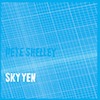 Aside from his role as the lead singer of The Buzzcocks, Pete Shelley briefly operated his own label, Groovy Records, devoted to strange electronic music. Drag City have reissued the full Groovy catalog including this mesmerizing solo album by Shelley. Consisting solely of shifting oscillator patterns, this is a far cry from the short, choppy punk he is best known for yet is just as engaging as his more famous efforts.
Aside from his role as the lead singer of The Buzzcocks, Pete Shelley briefly operated his own label, Groovy Records, devoted to strange electronic music. Drag City have reissued the full Groovy catalog including this mesmerizing solo album by Shelley. Consisting solely of shifting oscillator patterns, this is a far cry from the short, choppy punk he is best known for yet is just as engaging as his more famous efforts.
Recorded in 1974, Sky Yen pre-dates any of Shelley’s or his contemporaries’ forays into punk. The music falls closer to Cluster or Tangerine Dream than to The Sex Pistols or The Clash. It is hard truly pin it down as it never settles into the easy drones that many Kosmische groups often employ. This material remained shelved until 1980 when The Buzzcocks had peaked (and were beginning to decline) and Shelley had the means to create his own label. I can only imagine how Buzzcocks fans reacted to the lengthy, abstract sounds contained within the grooves of Sky Yen.
The music is surprisingly aggressive; the tones Shelley generates are at times piercing and linger for longer than is comfortable. Yet for all the sharp edges, Sky Yen is quite engaging. Throughout the first part, Shelley creates a solid, unyielding force field of high-pitched waveforms. He holds some of them for a long time and they form a relentless resonant backbone for the piece. More chaotic whirrs and whistles scatter from the speakers, invading the room like nimble, miniature spacecraft.
The second piece unfurls in much the same way though has more in common with air raid sirens than music. While this would normally be alarming, it is so insistent that it captivates me and holds my attention far beyond expected. While Shelley does not rein himself in, he also does not aim for the volume and frequencies the likes of Merzbow or Whitehouse employ. His goal is total immersion, not hearing loss. By the end of Sky Yen, my ears feel cleansed in a way rarely achieved by any medical intervention. I honestly do not know whether I will come back to this album often but I do feel that it will be occasionally be spun when I need to clear the cobwebs from my mind.
samples:
 
Read More
- Administrator
- Albums and Singles
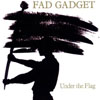 In August of 1982, Mute released the 7" single for "Life on the Line," one month ahead of the forthcoming album. It was a stark contrast to the previous single, "Saturday Night Special," released only in February that year. This too was a catchy melody, but it was unashamedly supplied by a beefy synth and almost purely electric rhythm. Frank had decided to strip the producing and engineering team leaving only John Fryer and himself at the controls. The result is arguably the favorite amongst the fans.
In August of 1982, Mute released the 7" single for "Life on the Line," one month ahead of the forthcoming album. It was a stark contrast to the previous single, "Saturday Night Special," released only in February that year. This too was a catchy melody, but it was unashamedly supplied by a beefy synth and almost purely electric rhythm. Frank had decided to strip the producing and engineering team leaving only John Fryer and himself at the controls. The result is arguably the favorite amongst the fans.
For me, along with a number of other contemporary listeners, Under the Flag was the entry point for many Fad Gadget fans. The popularity of Depeche Mode and Yazoo in 1981 and 1982 gained Mute widespread attention, allowing for a warmer reception from press, radio, and retail. Licensing into other countries began to take place too, and imports of the Mute's UK pressings were finding their ways overseas.
With Under the Flag, Tovey scaled back his usage of conventional rock instruments to a degree, and even in the absence of Miller and Radcliffe, it was still a Mute family affair, with Alison Moyet on guest vocals (and saxophone!) and photography and painting by Anton Corbijn. At the time, Frank's first child was born and the Brits were involved in that whole Falkland Islands mess. Frank Tovey was eager to make personal political statements and the album has a lot of reflections on conflict and loss. Tovey didn't seem to be basking in the joy of fatherhood, but commenting on the bleak world which he was born into. For me,however, the music commands the most attention.
The album's opener and closer is a bit of a cliche story of man in hard times, finds work in the government as "a civil service tool," but it's the hypnotizing pulse of the sequencer that makes "Under the Flag I" a sheer audio delight. Without a moment's rest, the punchy and playful "Scapegoat" is already in motion. Tovey is joined on vocal duties both by a chorus and a female delivering a Dutch nursery rhyme, and two songs later, "Plainsong," features almost no instruments: mainly a chorus and Tovey.
The highlights of the album actually do correspond with the singles pulled from the record this time. In addition to the lovely (and of course, completely bleak) aforementioned "Life on the Line" is "Love Parasite," which became a popular favorite due to its fat syth bass hook and simple lyrical refrains. It's easily a musical blueprint for Depeche Mode's "Two Minute Warning," from Construction Time Again, a year later. It wasn't an A side, however, but its A side was the flooringly brilliant "For Whom the Bells Toll." It is one's another sad story of loss set to a undeniably fantastic groove, but this time with yelps coming from the chorus. (The yelps were unsurprisingly removed for the truncated single version, however.)
"Under the Flag II" closes the album and it almost seems like Frank, himself, is also getting tired of the political statement: "now the story's become a bore / I don't want to hear it anymore." I actually enjoy the more caustic approach in this version, as lines like "and now the masses have been fed / suck the offal from the dead / now the joker's here to pick the sores" are entertaining to hear.
Fad Gadget played live in support of the album through 1983 but only made it half-way through the tour. Frank returned home from the Netherlands with both legs in casts following a stage dive that landed him on some steps. Other war wounds for him from the tour included, as described in the liner notes, a broken nose, two black eyes, and numerous lacerations and contusions.
samples:
Read More
- Administrator
- Albums and Singles
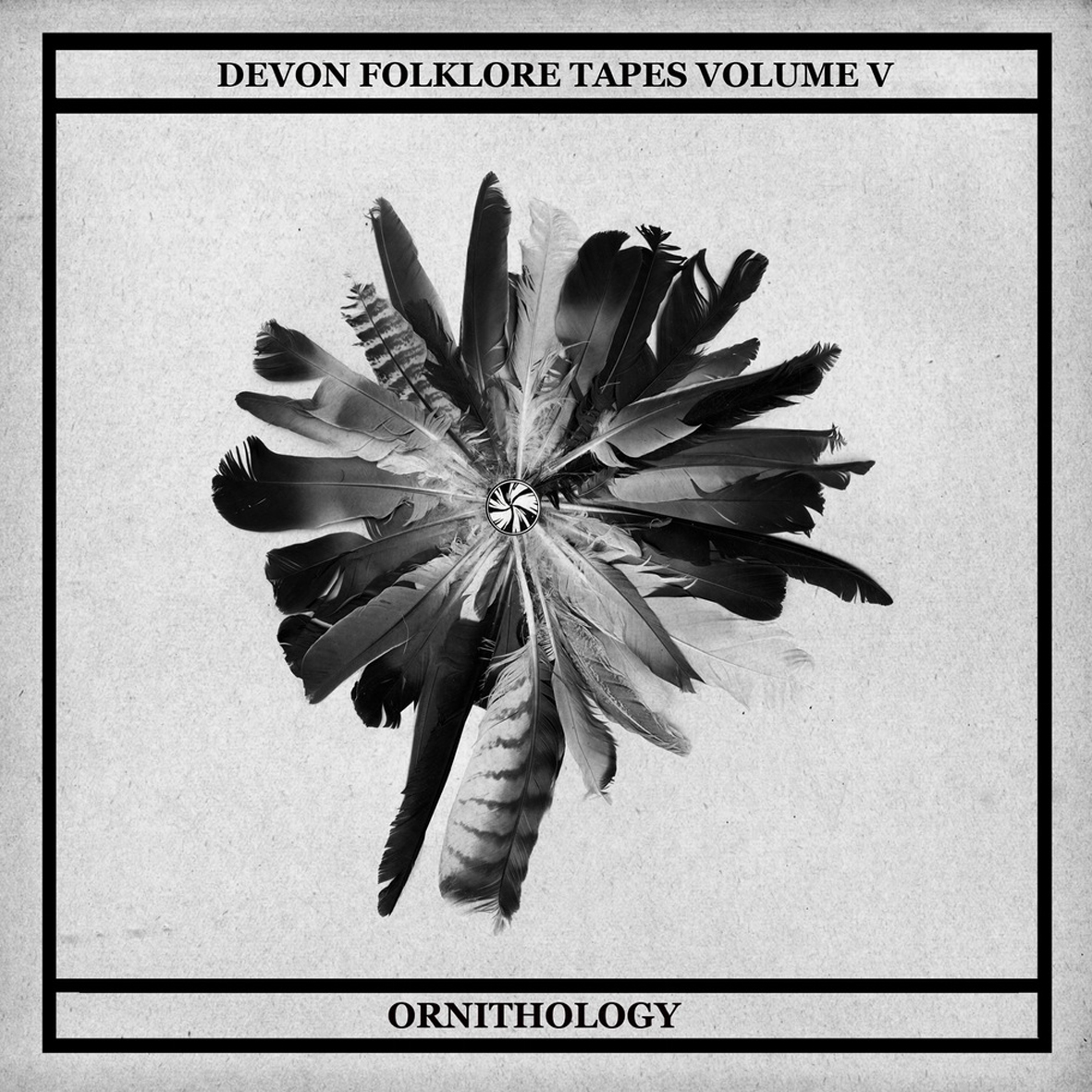 Folklore Tapes has quietly been one of the most singular and fascinating labels around for the last several years, a secret that they have managed to keep fairly well-concealed with their hyper-limited, hand-made and elaborate editions that tend to disappear quite quickly.  A handful of them eventually surface on Bandcamp, but most do not: Folklore Tapes releases are nothing if not elusive and ephemeral.  Thankfully, some of the more classic releases gradually get reissued, such as this one (which had an initial run of just 30).  This considerably larger (and newly vinyl-ized) reissue has an interesting twist, however, as the lengthy Children of Alice piece from the original has been replaced by three atypical new pieces from guitarist Dean McPhee.  Given that Children of Alice is comprised of the surviving members of Broadcast, that news will likely break a few hearts, but the two playfully hallucinatory soundscapes from the mysterious Mary Arches scratch quite a similar itch.
Folklore Tapes has quietly been one of the most singular and fascinating labels around for the last several years, a secret that they have managed to keep fairly well-concealed with their hyper-limited, hand-made and elaborate editions that tend to disappear quite quickly.  A handful of them eventually surface on Bandcamp, but most do not: Folklore Tapes releases are nothing if not elusive and ephemeral.  Thankfully, some of the more classic releases gradually get reissued, such as this one (which had an initial run of just 30).  This considerably larger (and newly vinyl-ized) reissue has an interesting twist, however, as the lengthy Children of Alice piece from the original has been replaced by three atypical new pieces from guitarist Dean McPhee.  Given that Children of Alice is comprised of the surviving members of Broadcast, that news will likely break a few hearts, but the two playfully hallucinatory soundscapes from the mysterious Mary Arches scratch quite a similar itch.
I certainly do not envy Dean McPhee, as stepping in as the replacement for the sole and rarely heard recording of James Cargill's post-Broadcast project is quite a tall order.  Fortunately, that departed piece is slated to be included in the group's formal debut, so it has not permanently disappeared and all is well.  More importantly, McPhee is a rather unique artist in his own right, so I am always eager to hear new work from him.  In this case, the new work is a three-song suite entitled Avian Dream Songs ("The Robin," "The Nightingale," and "The Blackbird").  I do not have the accompanying book, unfortunately, so I remain regrettably ignorant about each bird's significance in Devonshire lore.  However, I do know that crows are shapeshifters, magpie calls are an ill-omen, and that jackdaw cackles "betray runes of rut so unseemly a libertine would blush."  I would love to someday hear a jackdaw-themed Dean McPhee album, but he opted more for a serene and meditative feel with these pieces rather than going for raw, full-on sex this time around.  In any case, all three pieces are languorous, lovely, and unhurried improvisations over chirping and cooing field recordings of birds.  Of the three, "The Nightingale" is probably my favorite and the most substantial departure from McPhee's usual fare, unfolding as a gorgeously subdued and melancholy flow of volume swells.  I also quite enjoyed the tranquil and sun-dappled "The Blackbird," as it feels the most like an organic interplay with McPhee's unwitting avian collaborators.
I have absolutely no idea who is behind the "Mary Arches" guise, but I definitely know that I like them.  Stylistically, both halves of "The White Bird of the Oxenhams" strike a beautiful balance between collage, kitsch, and hauntology.  Naturally, there are plenty of birds involved here as well, though the specific type of bird that kept turning up to foretell premature deaths in the hapless Oxenham clan is up for debate.  "The Room" initially seems like a rather dark piece, opening with some wonderfully dense and eerie drones and evolving into a dissonant music box motif, but it eventually takes a rather cartoonish turn with some loud snoring and plinking percussion.  It is quite a hard piece to get a handle on, covering some quite strange and varied ground over its twelve minutes.  "The Reverie" is a bit more consistently strong and immediately gratifying, as it is built upon a beautifully wobbly and swooping synth melody over a lazily jaunty groove.  There are also plenty of squelching and crunching field recordings in the periphery to make it even more evocative.  At some point, however, that all fades away and the piece sounds like a crackling old recording of a vampire blasting away on a pipe organ in his lonely castle.  Anything resembling genuine darkness is mischievously undercut with plenty of random boinging noises though, along with some weirdly hollow yet festive percussion that sounds like the missing link between Einstürzende Neubauten and Les Baxter.  Then, bizarrely, it all winds to a close with a rippling and dreamy coda of almost tropical-sounding guitars.
Needless to say, the deranged and kaleidoscopic B-movie kitsch of Mary Arches makes for a very counterintuitive pairing with the understated beauty of Dean McPhee’s trio of avian dreamscapes, but it somehow perversely works as a whole.  While the quiet simplicity and understated melodicism of McPhee's songs admittedly took a few listens to fully seep into my consciousness, they eventually became my favorite part of the album and provide a very necessary, sincere, and earthy counterbalance to the carnival of absurdity that follows.  Of course, I enjoy that aspect of the album too, as there is plenty of fun and an occasional brush with genius amidst all the gleefully wonky madness, even if the "Oxenham" pieces are a bit too long, erratic, and uneven to quite work on their own.  Ultimately, it is McPhee's subtly haunting "The Nightingale" that stealthily dominates the album and comes closest to evoking the eerie witchery and timelessness of the stories that inspired this release, but there is plenty of strange, sublime, and mindwarping terrain to explore around it.
Samples:
 
Read More
- Administrator
- Albums and Singles
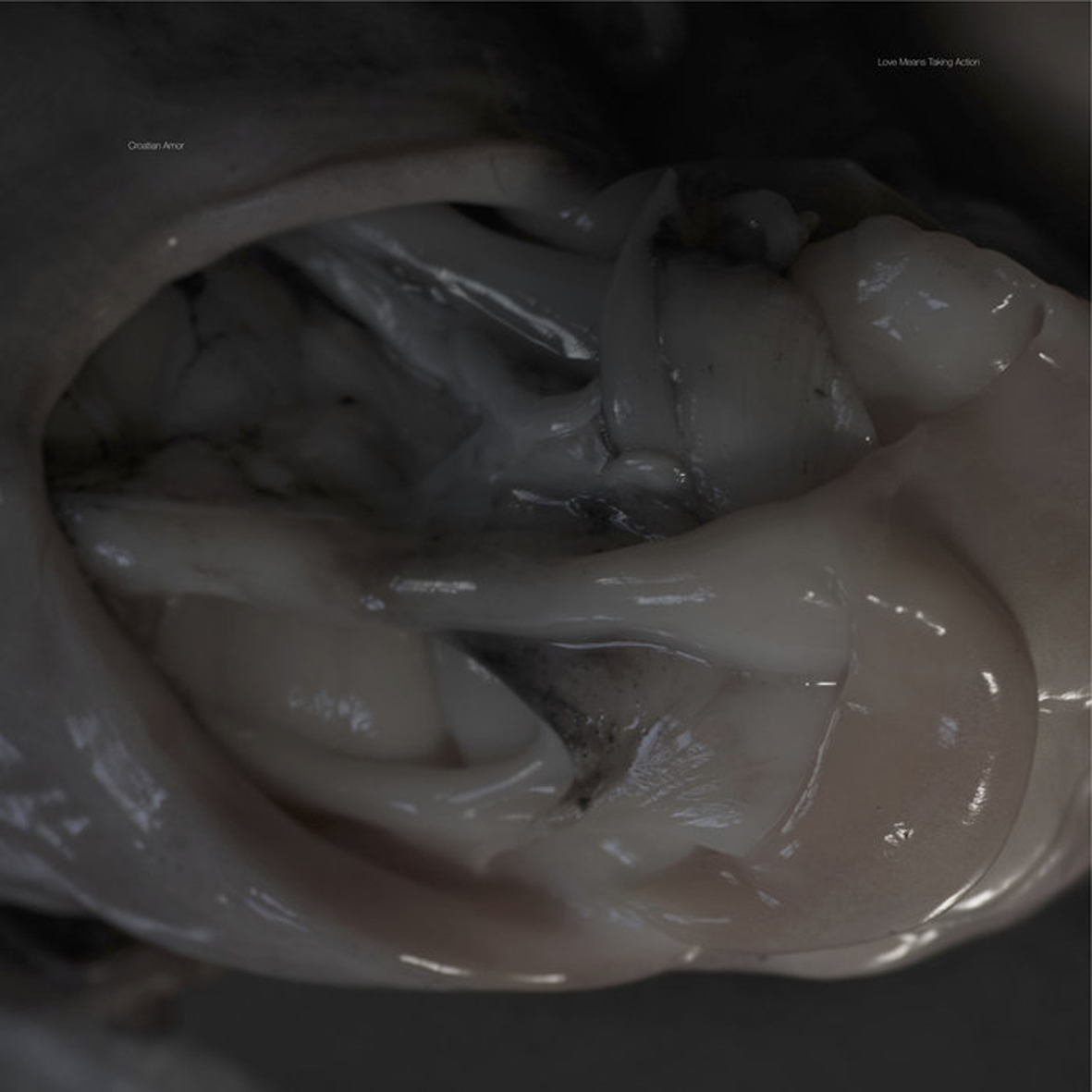 I am not sure if I am very late to the party on Croatian Amor or unintentionally getting in at exactly the right time, but Loke Rahbek's latest album has sneakily become one of my favorite releases of the year.  I suspect I would have missed Love Means Taking Action entirely had it not been co-released on Luke Younger's largely unerring Alter imprint, as Rahbek seems to have built a career out of being a shape-shifting enigma, leaving a large and varied discography of noise, power electronics, black metal, and dark wave behind him, most of which has surfaced on his own excellent Copenhagen-based Posh Isolation label (though he has also turned up in few Sacred Bones acts as well).  Also significant: Croatian Amor releases generally tend to have some kind of half-pornographic/half-conceptual motif suggestive of more harsh quasi-industrial fare.  As a result, I was quite surprised to discover that Love Means Taking Action most closely resembles the genre-fluid and dreamy Romanticism of prime This Mortal Coil.  It is anything but a nostalgic pastiche though, as Rahbek manages to capture the elusive feel of those albums while still doing something quite unusual and unique.
I am not sure if I am very late to the party on Croatian Amor or unintentionally getting in at exactly the right time, but Loke Rahbek's latest album has sneakily become one of my favorite releases of the year.  I suspect I would have missed Love Means Taking Action entirely had it not been co-released on Luke Younger's largely unerring Alter imprint, as Rahbek seems to have built a career out of being a shape-shifting enigma, leaving a large and varied discography of noise, power electronics, black metal, and dark wave behind him, most of which has surfaced on his own excellent Copenhagen-based Posh Isolation label (though he has also turned up in few Sacred Bones acts as well).  Also significant: Croatian Amor releases generally tend to have some kind of half-pornographic/half-conceptual motif suggestive of more harsh quasi-industrial fare.  As a result, I was quite surprised to discover that Love Means Taking Action most closely resembles the genre-fluid and dreamy Romanticism of prime This Mortal Coil.  It is anything but a nostalgic pastiche though, as Rahbek manages to capture the elusive feel of those albums while still doing something quite unusual and unique.
Posh Isolation/Alter
It is probably impossible to discuss this album without mentioning that the last significant Croatian Amor release was conceptually quite a provocative one, as 2014's The Wild Palms cassette was only available in exchange for a full-frontal nude photo of yourself.  Unsurprisingly, I do not have that release.  I hesitate to say that Rahbek has mellowed at all since then, but the conceptual side of Love Means Taking Action is a bit more accessible (if less erotic): he is freely sharing the raw material of the album in hopes that others will transform it into something of their own (a challenge that has at least been taken up by Drew McDowall and Felicia Atkinson thus far). It is admittedly a very good idea, especially since Love Means Taking Action has a very strong, instantly recognizable, and extremely malleable theme in the opening "An Angel Gets His Winged Clipped" courtesy of an unnamed female vocalist.  The same beautiful refrain explicitly appears again in more chopped and distorted form in "Like Angel," but it is entirely possible that it is unrecognizably strewn all over the whole album in various mutated incarnations, as a lot of heavy lifting is done with warped, layered, pitch-shifted, and cut-up vocals.  Stylistically, Rahbek has dabbled in very similar fare on past Croatian Amor albums, but Love Means Taking Action explores that thread in a much more cohesive and sustained way.  Also, Rahbek has largely jettisoned most of the recognizably contemporary synth and noise textures normally found on Croatian Amor releases to give Love a more timeless and "vintage 4AD" feel.
Much like a good This Mortal Coil album, these twelve pieces work best as a languorously flowing and gently hallucinatory whole.  It is hard to pick out a strong single, but that is not for lack of strong material.  Rather, Love Means Taking Action feels like beautifully lush reverie that periodically blossoms into more structured and memorable hooks.  In a perverse way, this is a brilliantly crafted and darkly sensual pop album that has been collaged, blurred, and stretched into fuzzy narcotic abstraction.  The closest Rahbek comes to a would-be hit is probably the understated and sexy "Any Life You Want," which marries a stark kick-drum pulse to clipped, decontextualized, and soulful female vocals and an erratically warbling and fluttering synth motif.  Rahbek displays pitch-perfect instincts and impressive lightness of touch throughout the piece, maintaining a deliciously enigmatic and erotic unresolved tension that never overstays its welcome or breaks its bleary nocturnal spell.  My favorite piece is a bit less immediately gratifying, however, as "Like Angel" takes a few minutes to fully catch fire.  Initially, it feels like a bit of hissing and meandering drone piece with some odd symphonic flourishes, but it improbably breaks into an especially tender and striking reprise of the album’s opening vocal theme around the two-minute mark.  Then, it remarkably gets even better, as Rahbek twists and layers that theme into beautiful new shapes.  Admittedly, it ends far too soon for my liking, but I am happy enough that it simply exists.  Elsewhere, the closing title piece is yet another wonderful surprise, unleashing a poignantly melodic synthesizer motif that feels like the climactic scene of a perfect and imaginary ‘80s John Hughes film.
This is the rare album where I have absolutely nothing to critical to say at all, as Rahbek does not make a single false move anywhere, displaying both a distinct knack for crafting great hooks and the vision to apply them to a sensuous and shadowy collage experiment that is all his own.  While a few of the shorter interludes are not particularly memorable, that seems to be entirely by design, as Love Means Taking Action is a masterfully sequenced whole that sustains a precariously dreamlike illusion for its duration while still finding seductive new shades of mood for each fresh piece.  I like every single goddamn song here–I think that only happens once a year, at best.  Love Means Taking Action is everything I could want in an album seamlessly blurred together into a sexy, sad, flickering, experimental, and warmly hallucinatory tour de force.
Samples:
 
Read More
- Administrator
- Albums and Singles
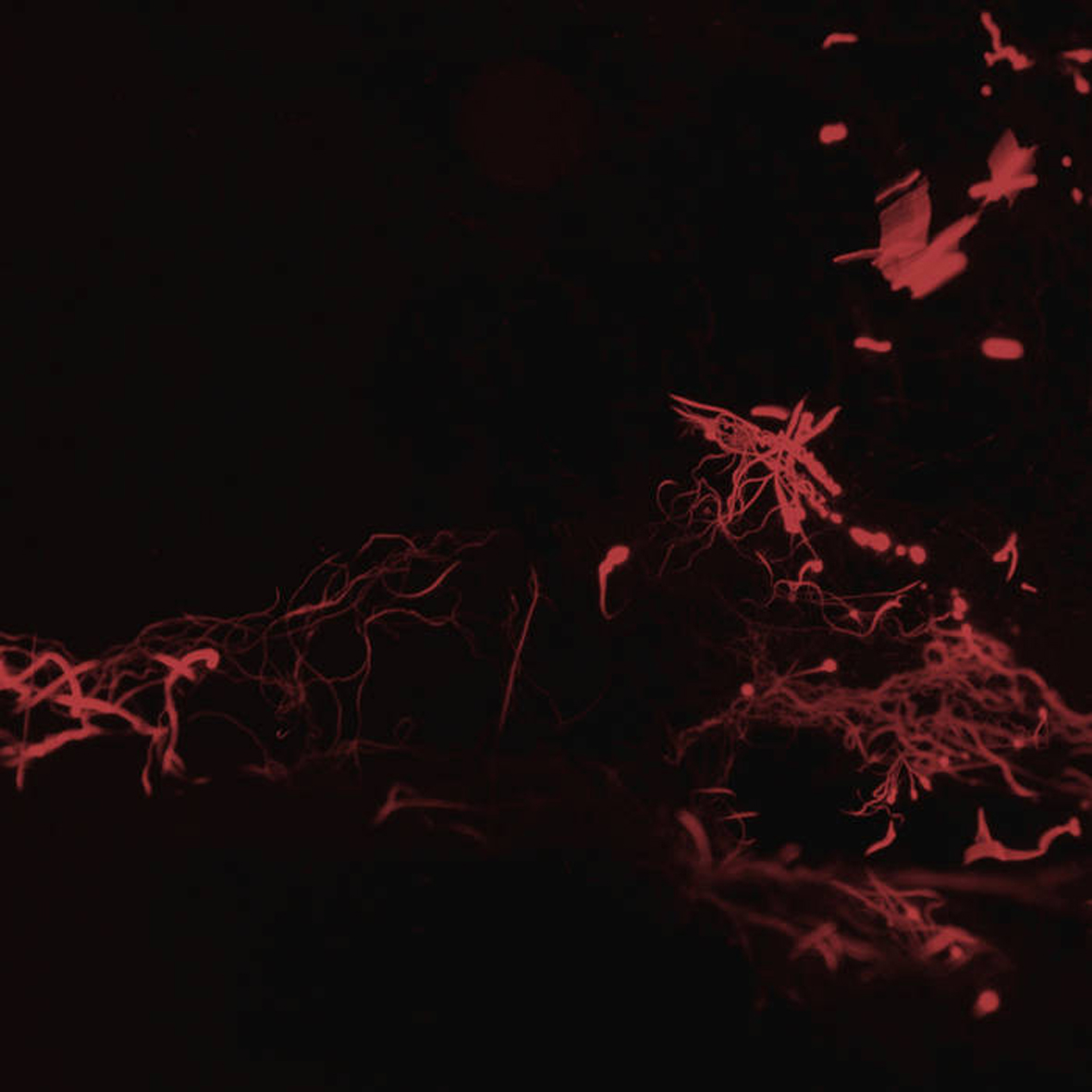 Erik Skodvin is having quite an atypically prolific year, following up a stellar B/B/S/ album and the much-anticipated reissue of Deaf Center's debut with the return of his Svarte Greiner guise.  As with all Skodvin projects, Moss Garden is quite a dark and quietly heavy affair, but it is a bit more abstract, mysterious, and longform than much of his other output.  While Skodvin's eerie Ebow work is sometimes recognizable amidst the brooding murk and seismic shudders, Moss Garden works best when it is just a billowing black cloud of seething menace.
Erik Skodvin is having quite an atypically prolific year, following up a stellar B/B/S/ album and the much-anticipated reissue of Deaf Center's debut with the return of his Svarte Greiner guise.  As with all Skodvin projects, Moss Garden is quite a dark and quietly heavy affair, but it is a bit more abstract, mysterious, and longform than much of his other output.  While Skodvin's eerie Ebow work is sometimes recognizable amidst the brooding murk and seismic shudders, Moss Garden works best when it is just a billowing black cloud of seething menace.
Moss Garden is divided into two side-long pieces, "The Marble" and "Garden."  "The Marble" opens the album in fine fashion with some distant and sinister swooping noises over a simmering bed of crackle and hiss.  Gradually, the piece starts to cohere as a forlorn and subtly quavering drone fades in along with some murky, glacially unfolding bass swells. That is where the piece more or less settles for a while, content to just hang in the air as an organically undulating fog, though Skodvin stealthily keeps it unpredictable with occasional buried snarls of distorted guitar and subtly shifting harmonies.  The true beauty of "The Marble," however, lies far more in how it flows and feels than in its notes, harmonies, and textures.  Skodvin is a brilliant illusionist, artfully erasing or concealing his own presence so effectively that the piece feels like a spontaneous (super)natural event.  In fact, the edges are so blurred here that previously apt terms like "neo-classical" or "cinematic" no longer seem relevant at all, as this music feels more like a creepy dream or perhaps an apparition seeping up from the floorboards than an earthbound composition.  Actually, maybe "cinematic" is not that far off the mark after all, albeit with the caveat that "The Marble" sounds like a fully formed and very arty aural horror film rather than a mere soundtrack to someone else's images.
"Garden" is quite a bit harsher, opening with a loud and reverberant crash of cymbals that dissolves into slowly fading afterimage of grinding metal.  That crash is repeated many more times over the course of the piece, with Skodvin mischievously allowing each eruption to fade into near-silence before jarring me yet again with the next.  Between those violent outbursts, an erratically throbbing and dissonantly harmonizing drone piece begins to emerge, as does an unpredictable layer that sounds like a field recording of a pond or meadow on a summer night.  Structurally, it is quite an interesting and unusual piece, as I am wrong-footed by the violent and perplexingly timed crashes of metal again and again.  It is definitely a willfully uncomfortable listening experience.  That is not exactly a flaw though, as the lingering after-effects of the crashes make it feel like the more melodic aspects of the piece are being slowly devoured by giant rusted metal teeth.  I can certainly appreciate that.  Occasionally, some snatches of twisted strings stick around long enough to provide a glimpse of curdled beauty to appreciate as well, but the piece's true essence is primarily the strange tug-of-war between form and entropy.
If Moss Garden has a legitimate flaw, it is the one common to a lot of vinyl releases:  the album seems to exist primarily as a delivery device for "The Marble," while the B-side feels like a lesser experiment that was stretched to a similar length.  The other arguable flaws are quite a bit more subjective, as this amorphous "dark ambient" strain is not my favorite of Skodvin’s many sides and he seems to be purposely avoiding anything resembling a strong hook or immediately gratifying theme.  That said, he also manages to avoid anything remotely conventional or lazy.  As a result, Moss Garden occupies a unique and fascinating gray area: it is too bizarre, purposeful, complex, and unpredictable to work as drone or ambient music, but too "unmusical" and experimentally structured to feel like a composition.  In short, it is quite an ambitious and transcendent release, even if the second half does not quite capture Skodvin at the peak of his powers–that Skodvin can be found on the B/B/S/ album.  Moss Garden is a comparatively minor album, but there is a lot to like for those of us interested in hearing Erik stretch his disquieting vision into blackened new vistas.
Samples:
 
Read More
- Creaig Dunton
- Albums and Singles
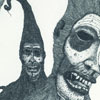 Functioning nicely as a teaser for the upcoming Half Blood full length on Relapse, this two track 7" sees Jenks Miller further indulging in the traditional minimalist sound that has underscored much of his previous work, but also a more overt embracing of his southern rock roots.
Functioning nicely as a teaser for the upcoming Half Blood full length on Relapse, this two track 7" sees Jenks Miller further indulging in the traditional minimalist sound that has underscored much of his previous work, but also a more overt embracing of his southern rock roots.
Miller also performs in alt-country band Mount Moriah, and that bit of southern twang bleeds over into "On The Eclipse".Meshing straight ahead southern rock with acoustic guitar pop and traditional keyboard sounds, the song musically feels far more conventional than I had expected, with the exception of Miller's growly demon vocals.The appearance of an extended guitar solo and spacey keyboards pushes the piece into a krautrock dimension in the latter half.However, the track never loses the mantra-like repetition that Horseback has always done so well, coming out in a tightly disciplined structure.
On the flip side, "Broken Orb" more fully embraces that classically minimalist sound, mixing ambient keyboards with slow, repetitive guitar layers.Other than the distant, gunshot like percussion, the track stays in a meditative, calm place throughout its seven minute duration.
I'm feeling the more rock (as opposed to metal) sound Horseback has been working with recently.Not that there's anything wrong with metal, but that combination of traditional rock instrumentation with the minimalism that’s more Charlemagne Palestine than Sunn O))) becomes a more unique beast when everything comes together.If this is a preface for Half Blood, it's going to be an awesome one.Plus, this single comes with a Horseback branded vinyl cleaning cloth, which is an odd bonus.
samples:
 
Read More
- Administrator
- Albums and Singles

Two new side-projects from Locrian guitarist Andre Foisy, the former with David Reed (Envenomist) on keyboards, and the latter a live improvisation trio with Mike Weis (Zelienople) on percussion and Neil Jendon on synths. While the two are distinct projects and releases, there is a certain shared tense bleakness that exists between the two cassettes.
Brave Mysteries, Accidental Guest
Foisy and Reed’s collaboration is perhaps the one that sounds the most like Foisy's other work, though it stands on its own.The clear, morose keyboard tone atop distant guitar feedback on "Sootfall and Fallout" reminded me a lot of the Apocalypse Now soundtrack, in the best possible way, and Foisy's disembodied screaming adds to that feeling of madness and confusion.
"Ordovician" is not all that dissimilar, but the trumpeting synths and dark, jagged guitar playing gives the entire work a dark majesty that is hard to deny.Even when the closing moments of acoustic guitar seem to drift into brighter territories, there’s still enough squealing feedback and inhuman growls that keep things evil.
The final and longest piece, "Seven Before the Throne," clocks in at over 20 minutes, spreads itself out over the duration while bringing in a slow, malignant feel.The chaos ebbs and flows, like a wave of darkness that covers everything, only rescinding slowly to come back once again.Foisy's guitar eventually comes in, initially as clear individual notes rather than his usual dense distorted clusters.Slowly but surely the track becomes more and more dissonant until finally exploding into a full on singing wall of noise.

In contrast, the trio of Kwaidan's live improvisation feels less focused, but not in a bad way.Opening with sampled strings, there's an erratic, but still structured quality to them, with shrieking feedback like an collapsing metal foundry.Sporadic percussion appears here and there, propelling the performance along with a messy shamble.
At times the mix verges on chaotic and formless, before opening up to allow in more space, allowing in pure guitar to balance out the swelling synths.The performance cycles between ambient space and ambiguous chaos a few more times before coming to its conclusion.
While both of these releases are strong in their own right, I would have to give the edge to Eolomea's tighter structure and composition.The three tracks on that tape feel more fleshed out and fully realized, while at times Kwaidan occasionally drifts into a directionless space, even though those moments are few and far between.
samples:
 
Read More
- Administrator
- Albums and Singles
With scores of releases both solo & in collaboration that stretch back for more than 20 years, Richard Youngs perhaps needs the least amount of introduction of any of the artists Root Strata has worked with. We're extremely excited to help Richard add another singular entry into his discography. Core To The Brave hits with a shock and never lets up. Composed of what appears to be blown out bass & spastic drum rhythms, these tracks cascade into shimmering loops of distortion, their weight reaching a critical mass that often feels likes it's on the verge of ecstatic collapse. Everything is elevated further in & up by that one and only voice, floating over top like a lush wind come down from the mountains.
More information here.

Read More


